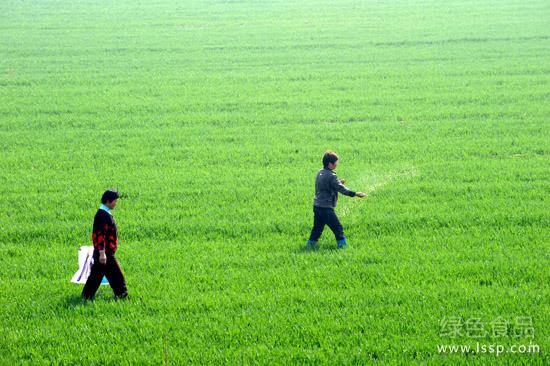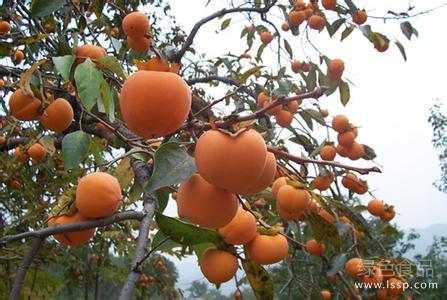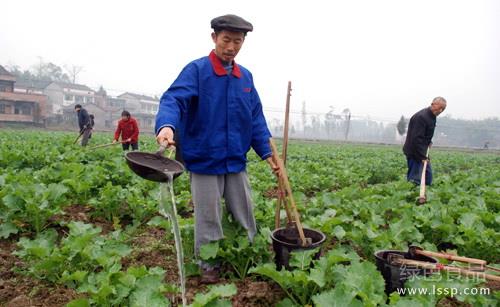Mastering the technology of "foliar fertilization" to save late-onset wheat

Fertilize wheat
As early as 2010, foliar fertilization technology has been widely used in the double-high planting system of winter wheat in China. This is both a fact and an experience. Now we need to go back and summarize the background conditions, technical content and the potential and benefit of this measure in the production system of "double height" of winter wheat, which is very necessary for the more rational application of foliar fertilization technology in the future.
If winter wheat encounters continuous low temperature weather in spring, coupled with lack of rain and light, it is very disadvantageous to the normal growth of wheat seedlings after turning green, and the growth period will be delayed by several days. for example, premature senescence may shorten the filling period of wheat, which will reduce the 1000-grain weight and so on.
In order to reduce the impact of disaster weather, the Ministry of Agriculture will require that the management of wheat fields in the middle and later stages be strengthened. in the aspect of fertilization, in view of the characteristics and contradictions of the decline in fertilizer and water absorption capacity of wheat roots in the later stage, we should seize the key period of wheat yield formation during flowering-filling period. The technical measures of "one spray and three prevention" were carried out in a large area, that is, potassium dihydrogen phosphate and urea were sprayed on the leaves. By supplying nutrients to wheat leaves to make up for the loss caused by the decline of root absorption in the later stage, the technology of delaying wheat plant senescence, reducing dry-hot wind damage, increasing wheat filling intensity, increasing grain weight and maintaining yield can be achieved.
According to a great deal of experience in production and application, experts give the following suggestions:
1. In the double-high wheat production system, the late growth of flowering-filling is very important to maintain the yield. In the later stage, the management of water and fertilizer should not be relaxed. Especially for modern high-yielding varieties, water and fertilizer management in the later stage is the key to create high yield. as the agricultural proverb says, "there are many wheat harvests, many spikes and large grains are full", which shows that water and fertilizer management in the later stage is very important to the formation of yield. Whether it is excessive prosperity, greed for youth or premature aging, both will lead to a reduction in production. At this time, the goal of water and fertilizer management is to maintain root activity, prolong the functional period of leaves, promote the transport of photosynthates to grains, and strive for grain weight. As the decline of root activity in the later stage is a regular trend, opening the way of extra-root supplement is the correct choice to strengthen nutrition regulation in the later stage, with large leaf area and rapid supply of nutrients directly through foliar fertilization. to avoid the fixation and degradation of nutrients in the soil, so the nutrient use efficiency is higher than that of soil fertilization.
two。 Under the condition of abnormal climate and environmental deterioration, in order to strive for the double height of wheat, in addition to root fertilization, foliar fertilization technology should also be made full use of, especially when the topsoil is dry in high temperature and dry season and there is no irrigation condition. the available nutrients in the rhizosphere soil are not smoothly transported, or in the waterlogged and waterlogged land, crop roots are anoxic, resulting in crops can not absorb normally, foliar fertilization should be adopted.
3. Foliar fertilization in the later stage of winter wheat as a routine measure of double-high production system, generally for wheat fields with large population and normal seedling condition, in order to prevent lodging caused by dry and hot wind in the later stage, it was sprayed 2 times 3 times after flowering-filling period. it contains a mixture of 1% fulvic acid, 0.5% urea and 0.2% potassium dihydrogen phosphate in areas with demand and conditions. In the later stage, the composition of foliar fertilization of wheat can also increase boron fertilizer and silicon fertilizer.
In a word, the rational use of leaf fertilizer is beneficial to protect the 1000-grain weight of wheat, increase the adaptability of the plant to dry and hot wind by regulating transpiration, and reduce the lodging caused by dry and hot wind before harvest, which is beneficial to stable yield.
- Prev

Three key points of raising young trees to save old persimmon trees in winter pruning
Three key points of raising young trees to save old persimmon trees in winter pruning
- Next

Methods of ensuring rape safe overwintering and protecting rape seedlings in winter
Methods of ensuring rape safe overwintering and protecting rape seedlings in winter
Related
- Fuxing push coffee new agricultural production and marketing class: lack of small-scale processing plants
- Jujube rice field leisure farm deep ploughing Yilan for five years to create a space for organic food and play
- Nongyu Farm-A trial of organic papaya for brave women with advanced technology
- Four points for attention in the prevention and control of diseases and insect pests of edible fungi
- How to add nutrient solution to Edible Fungi
- Is there any good way to control edible fungus mites?
- Open Inoculation Technology of Edible Fungi
- Is there any clever way to use fertilizer for edible fungus in winter?
- What agents are used to kill the pathogens of edible fungi in the mushroom shed?
- Rapid drying of Edible Fungi

